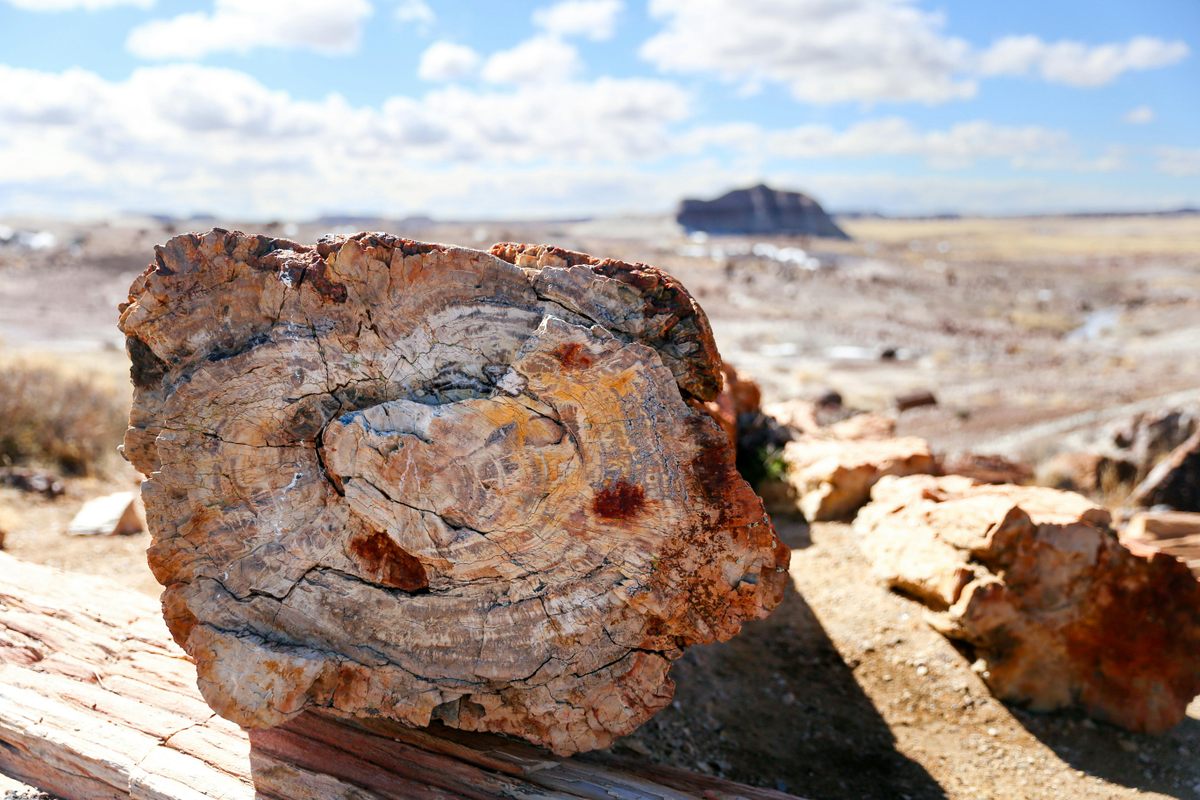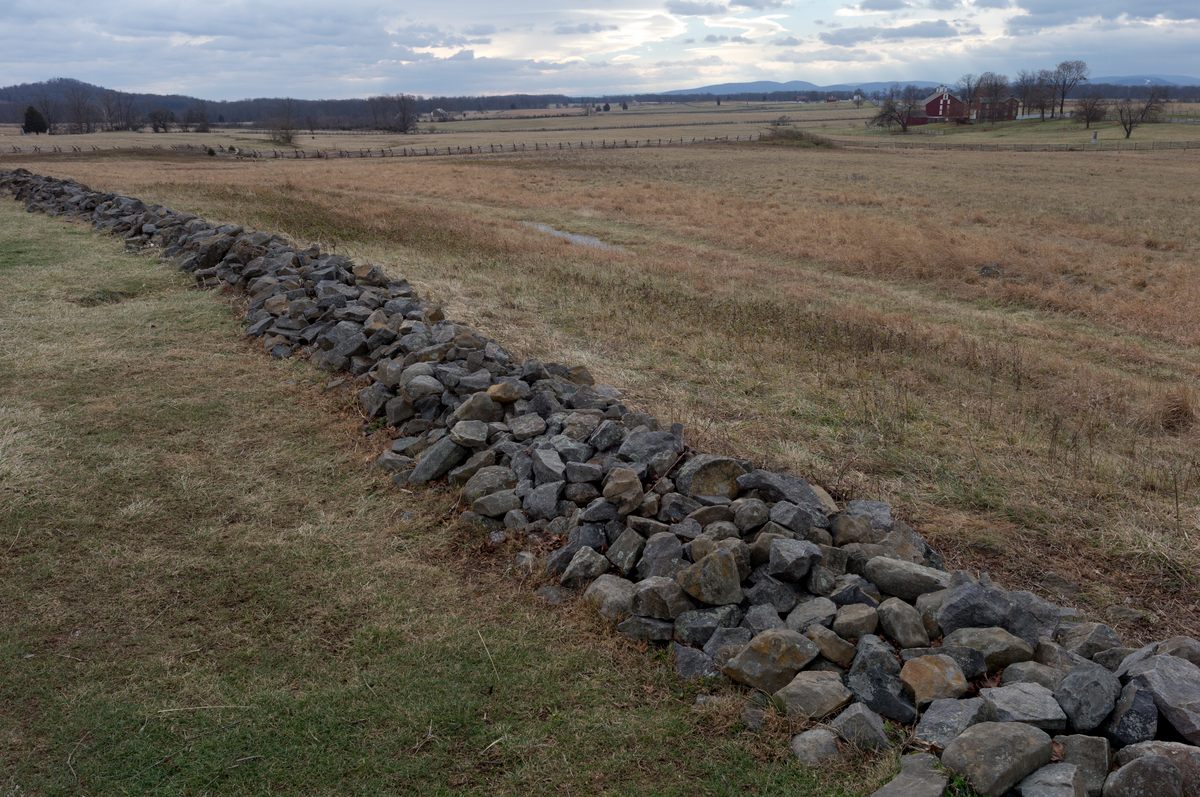When I was nine years old, my family took a road trip across the American Southwest, including a stop at Petrified Forest National Park. Over the previous week, I had already acquired a few souvenirs, but the mysterious, multi-colored stones at the park caught my eye. Before I could ask, I saw the signs at the museum, warning not only of the guilt (and possible criminal charges) that follow anyone who removes a stone, but also of the people who had taken them anyway, and how they’d lived to regret it. There was also a letter on display that caught my eye, from a kid like me—“Dear Petrified Forest,” it read, “I’m sorry that I took your rocks.”
For many travelers, not just my child self, no trip to the national parks is complete without a souvenir. But when it comes to souvenirs that are physical pieces of the parks, think twice—or even three times. Not only do national parks generally have strict rules about removing things from the grounds (hence the old adage, “take only pictures, leave only footprints”), but beyond legalities, legend says that there might be supernatural consequences for taking something from the parks that doesn’t belong to you.
So, what are these cursed souvenirs? Where do you find them, and what happens should you acquire one? Check your backpack as we take a look at what just might be the most dangerous souvenirs the parks have to offer.
Petrified Wood
Petrified Forest National Park
This Arizona national park is famous for its petrified wood—what were once trees, but have, over the process of millennia, due to the type of sediment they were buried in, hardened and eventually fossilized into the unique, beautiful stone known as petrified wood. Arizona journalist Ryan Thompson, in a piece for Zocalo Public Square, caught the mesmerizing nature of petrified wood when he described it as “very magnetic; it’s beautiful, uncanny really, because it looks like wood, but it’s really heavy.” For visitors to the Petrified Forest, who may be encountering petrified wood for the first time, it’s tempting to bring a piece of this unique substance home. But those who do are breaking the law—and risking one of the infamous national park curses.
According to legend, bad luck will befall anyone who removes a piece of petrified wood from the Petrified Forest. The park itself acknowledges the curse—in the onsite museum at the park, visitors can read letters that Thompson described as “at turns heartbreaking and hilarious,” which have accompanied returned petrified wood, and which detail the pitfalls that those who took it have suffered. The only way to break the curse, the legend goes, is to return what you’ve taken—and because returning the pieces to their original location risks contaminating the site for scientific research, they go instead onto what’s known as the “conscience pile.”
If you’re looking to hunt for your own souvenir from the Petrified Forest, though, you don’t need to risk criminal activity or curses. Geocaching, a real-life treasure hunting game where participants hide and seek “caches” filled with surprises, is available in the park. You can even download an app to help your hunt for a perfectly legal, fun surprise to take home—no curses involved.

Pumice, Obsidian, and the “Curse of Pele”
Haleakalā National Park
One of the most dramatic, and perhaps broadest-reaching, “souvenir curses” is associated with Haleakalā National Park—and all of Hawai’i more broadly. According to legend, the “curse of Pele,” the Indigenous Hawaiian volcano goddess, will befall anyone who removes the natural materials of Hawai’i, like pumice, black volcanic sand, and obsidian, from the islands.
However, despite the name, this curse doesn’t date back to Indigenous Hawaiian beliefs, but to a frustrated park ranger in the middle of the 20th century. While the name of the ranger who, frustrated with tourists illicitly absconding with souvenirs, started the legend, their modern contemporaries may be less than grateful for their efforts. In 2023, Heather Whitesides, a ranger working in public affairs at Haleakalā National Park, told a reporter for SFGATE that “we would love for people just to stop taking stuff and then also please just stop mailing us stuff.” Over 1,000 pieces of mail returning items with “apologies to Pele” arrive at the park every year—at times overwhelming the park staff.
Moreover, the curse’s legend has no roots in authentic Indigenous Hawaiian tradition—a tradition that would still frown on taking any of the “cursed souvenirs,” though. Serge Kahili King, who holds a doctorate in philosophy and is an expert on Hawaiian shamanism, points out on his personal website that, while, “for Hawaiians, respect, if not worship, for Pele has lasted longer than that for any of the other old gods,” the legend of Pele’s curse makes no sense—in fact, there’s “absolutely no Hawaiian tradition relating to Pele’s concern about rocks.” Instead, the Hawaiian legend about rocks states that pebbles are the offspring of two rocks, so removing a solitary rock might not be cursed, but it would be cruel, as you would be depriving it of the chance to form a family.

Battlefield Stones
Gettysburg National Military Park
There’s long been an association in American culture between ghosts, the macabre, and the Civil War. From the spiritualist practices of Mary Todd Lincoln herself, to reported hauntings in Sharpsburg, Maryland, dating from the Battle of Antietam, there’s no shortage of spooky tales relating to this bloody chapter of American history. That’s why the Gettysburg Battlefield stone curse should come as no surprise to those who encounter it.
Gettysburg National Military Park is the site of President Abraham Lincoln’s famous Gettysburg Address and, prior to that, one of the Civil War’s bloodiest battles. Today, the battlefield is the home of a national park with educational exhibits, memorial sites, and self- and ranger-guided tours, as well as a visitor’s center and gift shop. Visitors are more than welcome to purchase a souvenir there, but if you’re thinking of taking something from the battlefield, think again. The stone curse holds that any item taken from the battlefield brings bad luck. According to Gettysburg Battlefield Tours, a local touring company, those who’ve taken stones have faced divorce, debt, and even jail time after taking stones.
Much like other cursed souvenirs, the items must be returned for the curse to break. Park ranger Christopher Gwinn, who confirms that Gettysburg often gets rocks returned, notes that the packages “cite the bad luck, or the regret of violating federal law by [having] taken something from a national park,” and emphasizes that taking things from a national park is “a violation of multiple federal laws,” with possible penalties that can include jail time.
Of course, Gettysburg’s legends don’t end at the stone curse. Haunted spots and spooky sightings abound on and around the battlefield. Former park ranger Mark Nesbitt has described many of the mysterious sightings at the park in his Ghosts of Gettysburg book series, which details visitor encounters over the years.
One figure in particular is known as the “Helpful Hippy,” a man in ragged clothing who offers visitors, especially those from Texas, advice and friendly words—and whose name may be misleading. In his book, Nesbitt claimed that, when a guest told him about meeting the Hippy, at a site where a Texas regiment famously took an area called “Devil’s Den,” she was describing exactly what a Texan looked like at the Battle of Gettysburg, rather than a modern person, “Hippy” or otherwise. Whoever—or whatever—the Helpful Hippy may be, though, he’d probably (helpfully) advise against taking any battlefield souvenirs. Just in case.
Plan your next adventure with our Explorer’s Guide to the National Parks, packed with overlooked wonders, expert tips, and all the best spots to visit.

